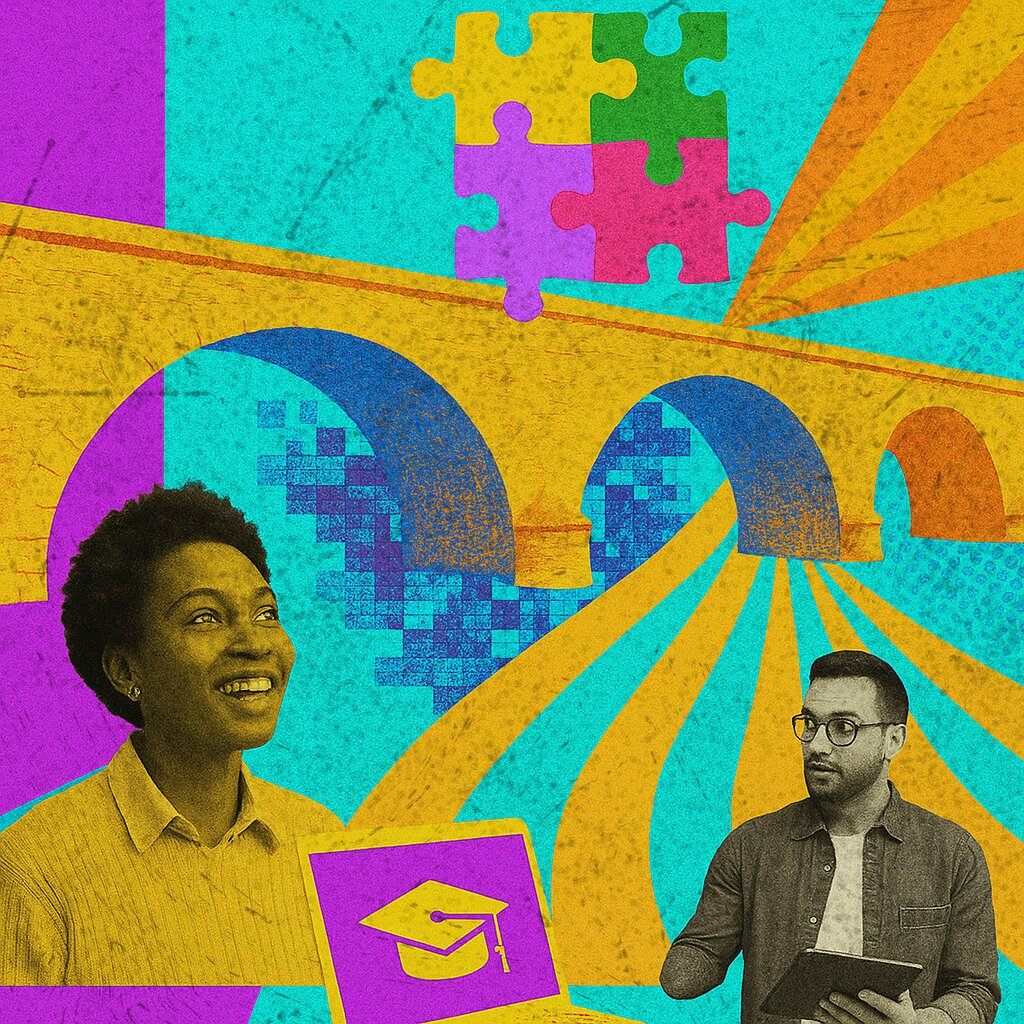Bridges, Not Silos: Integrating Instructional and Service Design for Inclusive Learning Systems
Learning doesn’t live inside content. It lives inside systems.
In every sector—healthcare, humanitarian aid, education, civic tech—learning plays a critical role. Teams need onboarding. Communities need awareness. Programs need continuous capacity-building. But in most organizations, learning design and service delivery sit in separate lanes. The result: fractured experiences, redundant processes, and wasted attention.
Instructional design shapes how people learn.
Service design shapes how people move through systems.
When these two disciplines operate together, learning becomes part of the journey—not an extra layer on top.
Learning as a Service Touchpoint
Most people don’t go looking for training. They encounter it in a moment of need: a health worker navigating a new reporting tool, a teacher adapting to displaced students, a beneficiary understanding cash assistance.
When learning is embedded into the service itself—at the right moment, in the right format—it sticks. It becomes contextual, useful, and dignified.
That shift requires both lenses:
- Instructional design ensures clarity, pacing, and learner retention.
- Service design ensures timing, access, and integration into the real-world workflow.
From Static Modules to Living Systems
Traditional training programs often assume time, motivation, and attention are unlimited. They’re centralized, content-heavy, and detached from daily realities. Meanwhile, service teams are trying to operate under pressure—limited bandwidth, inconsistent infrastructure, cultural complexity.
An integrated design approach adapts:
- Microlearning built into onboarding flows
- Visual guides embedded in interfaces and forms
- Audio prompts for low-literacy or multilingual contexts
- Peer-led facilitation inside community hubs
- Feedback loops that adjust learning in real time
Learning becomes a living part of the service environment, not a file buried in an online portal.
Shared Principles, Shared Practice
Both instructional and service designers use human-centered methods: field research, prototyping, co-creation, iteration. Yet they rarely collaborate. Merging the two requires shared frameworks, shared language, and joint ownership over user experience.
At ADSI, we build hybrid teams across these disciplines. When a learning challenge shows up in a service design project—or vice versa—we don’t refer it elsewhere. We solve it at the intersection.
We ask:
- What do people need to know, at what moment, and in what form?
- Where does learning happen in the journey?
- How do we reduce cognitive load without reducing clarity?
Toward Inclusive Learning Systems
Inclusive systems don’t separate learning from doing. They build the capacity to act, reflect, and adapt inside the flow of service.
This matters most where the stakes are highest: humanitarian programs, social protection systems, government reforms. In these spaces, effective learning isn’t a bonus—it’s the difference between a service that empowers and a service that fails.
The future of learning design is not in better courses.
It’s in better systems that teach as they serve.



Leave a Reply